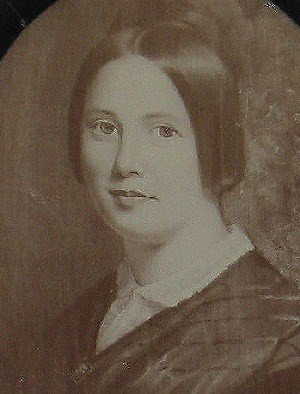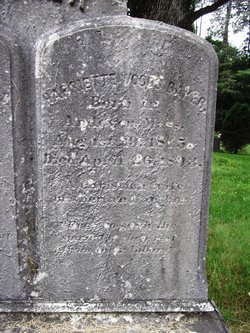Harriette Newell Woods Baker facts for kids
Quick facts for kids
Harriette Newell Woods Baker
|
|
|---|---|
 |
|
| Born | Harriette Newell Woods August 19, 1815 Andover, Massachusetts, U.S. |
| Died | April 26, 1893 (aged 77) Brooklyn, New York, U.S. |
| Resting place | Andover, Massachusetts, U.S. |
| Occupation | Writer |
| Language | English |
| Alma mater | Abbot Female Seminary |
| Genre | novels, religious literature |
| Notable works | Tim, the Scissors Grinder |
| Spouse |
Abijah Richardson Baker
(m. 1835–1876) |
| Children | 5 |
| Signature | |
Harriette Newell Woods Baker (born August 19, 1815 – died April 26, 1893) was an American author. She wrote many books for children and was also an editor. She used the pen names Mrs. Madeline Leslie and Aunt Hattie.
Harriette Baker started writing when she was about 30 years old. She first wrote novels. After about 15 years, she began writing popular religious stories. Her most famous book, Tim, the Scissors Grinder, sold half a million copies. It was also translated into several languages. Baker published around 200 moral and religious tales. She wrote mostly for young readers and continued writing until she died in 1893.
Contents
Early Life and Education
Harriette Newell Woods was born in Andover, Massachusetts, on August 19, 1815. Her parents were Leonard Woods and Abigail Wheeler. She was named after Harriet Newell, an early American missionary. Harriette was baptized on December 10, 1815. Her father, Dr. Leonard Woods, founded the Andover Theological Seminary.
Harriette was a creative child with a vivid imagination. When she was young, she formed a sewing society with a friend. They earned money to buy a warm coat for a guest in her home. This guest, William Schauffler, was studying theology with her father.
After the sewing society, Harriette and her friend Elizabeth Stuart started a literary society. They called it "The Fireside." They would meet and read their stories to each other. When she was eleven, Harriette sent a short story to a newspaper called The Youth’s Companion. She earned one dollar for it. She also wrote for The Puritan, another paper.
In 1829, when Harriette was nearly 14, she attended Abbot Female Seminary. This was a new school for girls. She studied there until she was fifteen. Later, she continued her education with private tutors. She learned about math, history, and philosophy.
Writing Career and Popular Books
When Harriette was 20, she married Rev. Abijah Richardson Baker. He was a teacher at Phillips Academy. While living in Medford, Massachusetts, she published three small books. These were The String of Pearls, Louise Merton, and Frank Herbert.
In 1850, she moved to Lynn, Massachusetts. Her husband was a pastor there. She helped him edit two monthly magazines: The Mother’s Assistant and The Happy Home. Many of her writings from these magazines later became parts of her books. From this time on, she wrote and published constantly.
In 1855, she published The Courtesies of Wedded Life using the name "Mrs. Madeline Leslie." Around the same time, another large book, Cora and the Doctor, came out anonymously. Many famous people, including Washington Irving, praised this book. Its author's name was later revealed as Harriette Baker.
Many of her books had religious or moral messages. Her writing style was seen as very realistic. Her characters felt true to life. Publishers like Lee & Shepard released her books. Harriette Baker's books became very popular. Sometimes, 10,000 copies of a new story were printed at once. Her annual sales ranged from 250,000 to 500,000 copies.
Most of Baker's books were stories for Sunday schools and general reading. Several were republished in England. They were also translated into German, French, and Bohemian. Popular series included the Silver Lake, Golden Spring, and Brookside books. The "Tim" series and "Leslie" stories were also very well-liked. Tim: The Scissors Grinder was her most famous book. It was sold or given away by the thousands in England.
Harriette Baker enjoyed reading throughout her life. She could quickly understand the main ideas of a book. The day before she died, she had a lively talk with her son about a character from Victor Hugo's Les Misérables.
Personal Life and Family
On October 1, 1835, Harriette married Abijah Richardson Baker. He was a pastor for 15 years in Medford, Massachusetts. He also started the Central Congregational Church in Lynn, Massachusetts. Harriette was deeply affected by her husband's death in 1876.
After her husband passed away, she moved several times. She stayed with her son George Baker and his wife in Batavia. She also visited her son William Baker in Northborough. In 1880, she lived with her son, Dr. Charles Baker, in Brooklyn, New York. There, she taught knitting to a large sewing class in her son's church.
Harriette Baker died in Brooklyn, New York, on April 26, 1893. She was at her son Dr. Charles E. Baker's home. She had five sons, and four of them became Episcopal clergymen. Her sons were Dr. George Baker, Dr. Charles E. Baker, Dr. Frank Woods Baker, and Dr. Walter A. Baker. Another son, William Baker, was a professor at Harvard University.
Death
Two weeks before she died, Harriette felt unwell and had trouble sleeping. She had a bad cough. Her daughter, Mollie, got a nurse to help her. For a week, Harriette felt very sick and prepared for death.
The day before she died, she felt unusually well. She walked with her daughter to see the sunset. That evening, she talked with her son, Dr. Charles Baker, about a character from Les Misérables. The nurse said she slept very well that night. Early in the morning, the nurse helped her when she had trouble breathing. Harriette said, "Thank you. I am relieved. Now I think I can sleep." These were her last words before she passed away peacefully.
Her funeral was held on April 28, 1893. It was led by eight Episcopal clergymen. Her death was reported in major newspapers across the U.S. Her grave was moved to Andover, Massachusetts, where she was born.
Writing Style and Themes
Harriette Baker's characters were well-developed and felt very real. Her writing style was simple, clear, and often elegant. Her stories flowed naturally. Many of her scenes were vivid and powerful.
Her writings always had a strong moral message. They showed a deep understanding of people's spiritual nature. Baker's books were written in good English. They were free from confusing language or bad grammar. Reviewers compared her books to those of famous authors like Hannah More and Mary Martha Sherwood.
Her books taught high moral and religious values. They were not linked to any specific religious group. Because of this, they could be found in libraries of all Christian churches. Many of her books were republished in England and other countries. Tim the Scissors-Grinder was one of her most popular and helpful books. It first appeared as a series in a newspaper. Many people wanted to publish it as a book. People from all over the country praised its quality and how it helped many readers.
Selected Works
- Little Frankie Series (1860)
- Robin Redbreast Series (1860)
- Courtesies of Wedded Life (1860)
- Lost but Found (1860)
- Walter and Frank (1860)
- Tim, the Scissors-Grinder (1861)
- The Rag-Pickers, and other Stories (1861)
- Sequel to Tim the Scissors-Grinder (1862)
- Up the Ladder; or, Striving and Thriving (1862)
- The Two Homes; or. Earning and Spending (1862)
- Bound Girl, and other Stories (1862)
- Bound Boy and the Young Soldier (1862)
- The Prize Bible; or, Covetousness (1863)
- The Organ-Grinder (1863)
- Never Give Up; or, The Newsboys (1863)
- White and Black Lies; or, Truth Better than Falsehood (1864)
- Worth and Wealth; or, Jessie Dorr (1864)
- Tim's Sister; or, A Word in Season (1864)
- Light and Shade (1864)
- The Secret of Success (1865)
- Art and Artlessness (1865)
- Every-Day Duties; or, The Schoolmates (1865)
- Wheel of Fortune (1865)
- Juliette; or, Now and Forever (1866)
- Ingleside; or, Without Christ and With Him (1886)
- Trying To Be Useful (1868)
- In the Wilderness (1868)
- Cora and the Doctor (1868)
- Governor's Pardon (1868)
- Paul Barton; or. The Drunkard's Son (1869)
- Live and Learn (1869)
- Behind the Curtin (1869)
- Fashion and Folly (1869)
- The Hard Sum, and other Stories (1869)
- The Breach of Trust (1869)
- Edith Withington: a Book for Girls (1871)
- This and That (1887)
- Minnie and Her Pets
- Little Agnes
- Aunt Hattie's Library for Girls
- Aunt Hattie's Library for Boys
- Walter and Frank; or, The Apthorp Farm


